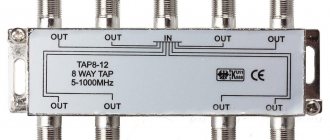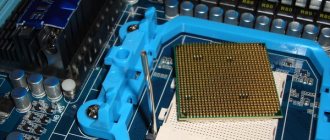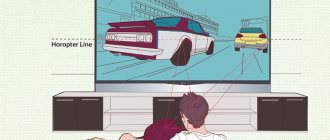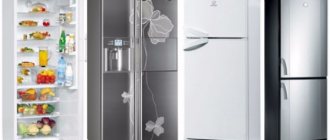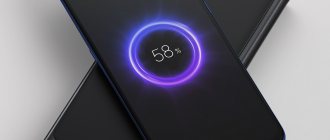Which one is better to buy? DSLR or mirrorless? These questions are often asked by beginners who decide to take up photography. The dilemma remains relevant, no matter how many new models of photographic equipment are released.
Therefore, in order to make the right choice, let’s find out what is better - a SLR camera or a digital one, and also consider the purposes for which each of them is used and what their distinctive features are.
What kind of camera do you have?
Mirror
50%
Mirrorless
50%
Voted: 2
What is the difference between a DSLR and a digital camera?
The main difference between a DSLR camera is the presence of a mirror, which is at an angle of 45 degrees and reflects the light flux into the viewfinder. Autofocusing is carried out using a special sensor unit. The image in the viewfinder is reflected as it really is.
Mirrorless cameras do not have a viewfinder, but if they do have one, it is only an electronic one. Control is entrusted more to the electronics; there is no ability to focus and adjust exposure, since the digitized image is immediately displayed on the display.
SLR cameras always consist of two parts - the lens and the body (body). Only the new generation of mirrorless models boast detachable lenses.
Matrix
The camera matrix is the sensor that is responsible for image quality, so how good your pictures will be directly depends on it. The principle of its operation is the same as that of a frame on an old film unit. Passing through the lens, the light falls on the matrix, due to which the image is captured. Essentially, this element is a semiconductor wafer containing thousands of light-sensitive cells (pixels). Each cell captures light and converts it into an electrical charge, which, under the influence of the processor, turns into a picture.
There are two parameters that you need to pay attention to when choosing a matrix:
- Permission. This indicator is responsible for the number of pixels that make up the matrix. For a high-quality photo there should be 10-12 of them, this will be enough;
- Size. This parameter is measured in millimeters. The larger the matrix, the better pictures you will get.
Important! A resolution of 10-12 megapixels is more than enough for a high-quality photo. All statements that there should be more of them are nothing more than a marketing ploy by manufacturers. Therefore, it is better to prefer a camera with a large matrix, but with the lowest resolution; such a camera will take better pictures.
Also, when choosing a matrix, you should pay attention to its type, namely: CMOS (CMOS - complementary metal-oxide-conductor) or CDD (CCD - charge-coupled device). Each of them has its own characteristics, but there are no striking differences between them. For example, devices with CMOS sensors cost much less, consume slightly less power, and operate slightly faster. That is why, when deciding how to choose a semi-professional SLR camera, it is better to choose such inexpensive models.
The next thing you need to pay attention to is the matrix format. Today there are two types: full frame (36x24 mm) or cropped (crop). Smaller (cropped) models are more suitable for amateurs, that is, people who do not plan to earn money with a camera. This is primarily due to the low price of such cameras, and optics for cropped models are also inexpensive. And the money saved can be spent on tripods for SLR cameras, lenses and much more.
Full-frame models will cost up to 200,000 rubles; due to the high quality of the images, such models are mainly purchased by “seasoned” photographers involved in studio shooting.
Last, but not least, the parameter that is worth paying attention to is the light sensitivity of the matrix (ISO). Like resolution, this option is very often used in advertising, saying that a high ISO value guarantees better light perception by the camera. In fact, everything is not quite like that. The thing is that a high sensitivity value really allows you to take a clearer picture in a dark room, but at the same time this can be reflected in the picture in the form of interference and noise. Therefore, it is not necessary to say that the photosensitivity indicator affects the image quality (in a good sense).
Camera specifications
When you buy a DSLR or mirrorless camera, you are purchasing a whole system with a set of different characteristics. It is important to know them in order to navigate the abundance of goods. Here are the most important of them:
- The size of the matrix is the main unit of the camera, a digital analogue of photographic film. The chip consists of millions of light sensors that convert sunlight into an image. The larger the matrix, the more light it captures and the noise in the photo becomes less.
- Noise is a photographic defect that occurs in low light. Represents chaotically located colored dots. You can get rid of digital noise using an editor, but this entails a loss of sharpness.
- ISO – light sensitivity of the matrix. The higher the value is set, the wider the possibilities for shooting in the dark. This increases the amount of noise. Optimal ISO values are 50, 100, 150. On DSLRs the range of values is large (up to 100,000). Soap dishes have up to 400.
- Shutter speed is the time for which the lens blades open when the shutter is released. Measured in seconds - 1/13, 10, 1/4000. The more it is open, the more light enters the matrix. In point-and-shoot cameras, the shutter speed is set automatically by the camera. In DSLRs you can set the shutter speed yourself.
SLR cameras, unlike point-and-shoot cameras, have about 50 characteristics. Not all of them are useful, as the manufacturer indicates. Consider the list of the most important parameters of DSLRs:
- Aperture is a value that regulates the lens opening by changing the diameter of the light beams passing through it. The smaller the aperture value, the larger the hole diameter. The parameter affects the depth of field. If you set higher values, the sharpness will be greater.
- White balance – adjusts the color temperature of a photo. Allows you to customize the light source.
- Focus point is the point at which the rays reflected from the image converge. There is an automatic mode where all available focus points are used. Single point mode allows the photographer to independently select the point on which the image will be focused.
- Color histogram – the tonal range of an image. The tool allows you to adjust brightness and color before and after creating an image.
Compact camera
What is the difference between a system camera and a DSLR? The design of a compact, unlike a DSLR, is much simpler. This is a unit with a one-piece body and a built-in lens.
The principle of operation and image acquisition is the same as that of a SLR camera, there is no difference here. However, light passing through a set of lenses is not separated into the viewfinder and the foam prism. The light immediately hits the matrix, and after processing the image by the processor, a photo comes out.
In fact, the photographer here is the equipment itself, and the owner of the compact is the customer who needs a specific object in the photograph.
Therefore, the disadvantage of a compact unit is that the processor processes the image in its own way, not allowing you to change the final result, which is easily possible in a DSLR.
Digital cameras are also divided into several classes based on the principle of applicability. There are reporter, studio, panoramic, etc. soap dishes.
These cameras have a built-in flash, and there are several standard modes, for example, conventionally called portrait, landscape, and macro photography.
The soap dish saves its files in JPEG format, unlike a DSLR, which creates a raster image when shooting. Why is a mirror device better at this point? A raster image is a picture, which is then very convenient for professional designers to develop in Photoshop. A digital camera does not have this privilege.
However, the following interesting “gadgets” can be found in system cameras:
- Interchangeable attachments for an already built-in lens, for example, to create a “semblance” of a wide-angle image.
- "Hot shoe" This is a special plate at the top of the compact where you can attach a removable flash or image stabilizer to make the photo as clear as possible.
- Manual focus. A relatively new thing, since the focus is still controlled by the processor itself. What's better? Determined by the owner of the equipment himself.
- Powered by any batteries. It's not always convenient to have a battery, which suddenly happens! and discharged. Standard AA batteries are sold everywhere, and the problem can be solved very quickly. This is where the digital camera compares favorably with other cameras. With a DSLR camera, this can be solved in an instant only with a special spare battery.
Advantages and disadvantages
Dry terminology will only allow you to better learn about the internal structure of cameras, but will not help much in choosing. The best way to decide is the pros and cons of each photographic equipment. Let's look at them in tables.
SLR Cameras
| pros | Minuses |
| Shooting speed. The shutter release of an amateur DSLR in daylight is 2 seconds. Expensive models take a photo in less than a second in the dark. | Carcasses weigh at least 400 grams. Whale lenses weigh about 300 grams. Such dimensions can no longer be stuffed into a pocket or handbag. |
| The optical viewfinder allows you to see the picture in real time as it really is. | You need to know how to use a SLR camera. If you just point and press the shutter, the photograph will not differ from the image of a point-and-shoot camera. |
| Ergonomics. DSLRs have buttons, wheels, and a monochrome display for quick settings. | The price of professional photographic equipment starts from 50 thousand rubles. Amateur ones will cost about 20 thousand rubles. This is 7 times more expensive than a soap dish. |
| With phase detection autofocus, you can adjust focus in a few seconds. In this case, you do not need to look away from the viewfinder. | Changing lenses is not the fastest process. When carrying out the rearrangement, we must not forget that dirt, dust and moisture should not get on the matrix. |
| The device turns on in 1-1.5 seconds. This is especially important when you need to take a quick photo. | |
| DSLRs always use rechargeable batteries that can last 2-3 days of continuous shooting, since they use a viewfinder that consumes virtually no energy. | |
| In the low-cost segment, the camera will provide more features than a point-and-shoot camera for the same price. | |
| All models are equipped with protection from moisture and dust, and professional equipment is completely waterproof. | |
| Ability to save images in RAW format. The photo is saved in the form in which we see it in the viewfinder. At the same time, in additional programs such as Photoshop, it becomes possible to adjust exposure and color rendition. | |
| Large selection of lenses for different purposes. | |
| The size of the resulting images. This is an important moment for sales and publication in print media. |
Structure of a SLR camera
Mirrorless cameras
| Advantages | Flaws |
| Lightweight - soap dishes weigh approximately 300 grams. There are models that fit in your pocket and weigh no more than 200 grams. | Compact soap dishes owe their size to a small matrix and the absence of a mirror, which affects image quality. |
| High resolution video shooting (4K). Few DSLRs can boast such shooting quality. | Slow and automatic autofocus. The photographer has no way to adjust the focus where he needs it. |
| Built-in WiFi module. This is convenient when you need to transfer photos to your phone or computer. | The absence of a mirror affects long exposure times compared to a DSLR, especially in the dark. If your hand twitches even a little at this time, the entire image will blur. |
| It’s convenient to carry a mirrorless camera with you so you can quickly pull it out and take a photo. | Old soap dishes run on batteries that constantly need to be changed or charged. New models are produced with batteries, but their operating time is much shorter, since the screen consumes a lot of energy during operation. |
| Almost all new soap dish models are shockproof and waterproof. | Ergonomics at a low level. To set up the camera, you will have to take a break from the image and delve into the settings. |
| Affordable price. The most expensive mirrorless camera can only be compared in cost to an entry-level DSLR camera. | We put weak lenses on soap dishes that do not have long focal lengths. And only expensive new generation mirrorless cameras have the option of replacement. In addition, the choice of interchangeable lenses is very small. |
Diagram of a mirrorless camera
Camera selection criteria
Image quality. Nowadays, with advanced gadgets, you can take a good photo even with a regular smartphone. Therefore, a smart decision would be to opt for the best quality. Good pictures can be taken with both a digital and a SLR camera, if you compare representatives of the same price segment.
Equipment dimensions. The parameters and weight of the camera are a very important aspect that is worth paying special attention to, because this is the main difference between a compact and a DSLR. Do you expect to carry a camera bag with a heavy DSLR camera and lens for your work, or would you be better off with a camera that fits easily into your pocket? For most amateur photographers, this criterion is decisive.
Subject of shooting. It is better to decide in advance what you mainly want to photograph. This will help you avoid disappointment in the properties of the equipment you have already purchased, because each camera model is created for its own specific tasks. For example, for shooting in the dark, a DSLR camera is more suitable, since it will provide image quality at a level higher than digital.
Photo size. Everything is quite simple here. If you plan to enlarge your photos several times (for magazines, posters, calendars, etc.), you should definitely choose a DSLR. But if you need frames for a personal photo album, then a miniature digital camera will be quite enough.
Interest in the process. A SLR camera will reveal its full range of capabilities in the hands of a master. By using only automatic mode when shooting with a DSLR and a digital camera, you will get pictures that are almost identical to each other. Therefore, a SLR camera exists for a more “advanced” level of photography.
These criteria usually help to understand the needs and give preference to one of the two camera options. But if you still don’t understand which technology to choose, let’s take a closer look at the design of both devices.
Which camera is better - DSLR or mirrorless?
In the battle of mirrorless cameras versus DSLR cameras, the second option loses a little in terms of shooting quality. However, if the device is used to take home photos and print in small formats, there is not much difference.
The main thing in choosing is to focus on needs. If you want to experiment and study the art of photography, then make a choice in favor of SLR photographic equipment. But a soap dish will be better able to quickly capture the moment.
Size is also an important criterion. It’s always convenient to carry a mirrorless camera with you, but for a DSLR you’ll need a case or extra space in your bag.
So it's impossible to say which will be better. The main thing is to choose a camera that will be convenient and understandable to the owner.
Lenses
Since a SLR camera is essentially divided into two parts: “body” and “glass,” there are two types of device configuration:
- Kit. Together with the camera body, you receive the lens most suitable for the unit, which is included in the kit. This option is more suitable for novice photographers, since it is difficult to immediately understand which “glass” and how to work. Spending a large sum on a separate lens that you cannot use is not advisable;
- Body. Based on the translation, you can understand that when buying a camera in this configuration, you will only receive the “body” without a lens, which you will have to choose yourself based on your preferences;
- Double Kit. The most optimal option for “beginners”, since in this configuration you will receive several lenses for your camera.
Good to know! The opinion that for high-quality photographs you need to purchase 2-3 separate expensive lenses is not true. The fact is that most people are happy to shoot with “whale glass” and do not experience any inconvenience.
Features of mirrorless cameras
Mirrorless, or non-reflex, is a professional component camera that consists of a body and a regular lens, but does not have a mirror mechanism. As in a compact, light through the lens immediately hits the matrix, and the photographer sees only the processed image through the display. The lenses of non-DSLR cameras are in no way inferior to their DSLR counterparts, but their focusing speed is noticeably lower than in DSLR devices. However, this is enough to create high-quality professional personnel.
The price of non-mirror models is slightly lower than mirror ones. But the main advantage of non-DSLR cameras is their light weight. Although the constant improvement of the automatic focusing mechanism and an increase in the functionality of the camera also leads to an increase in their weight. At the same time, mirror models are learning to make things easier and easier. Therefore, it cannot be said that mirrorless cameras are replacing DSLR cameras.
So, it is impossible to say which camera is better. This is most likely a matter of habit rather than real technical superiority. The most important thing is to buy a camera that is comfortable, fits well in the hand and is understandable to its owner. And the rest can be learned.
Voting for the best DSLR camera
Which DSLR camera would you choose or recommend?
Canon EOS 4000D Kit
66.67 % ( 2 )
Canon EOS 1300D Kit
0.00 % ( 0 )
Canon EOS 600D Kit
0.00 % ( 0 )
Canon EOS 200D Kit
33.33 % ( 1 )
Canon EOS 100D Kit
0.00 % ( 0 )
Nikon D5300 Kit
0.00 % ( 0 )
Nikon D3400 Kit
0.00 % ( 0 )
Nikon D3300 Kit
0.00 % ( 0 )
Nikon D3200 Kit
0.00 % ( 0 )




